Tutorial: How to Clean Cartwheel
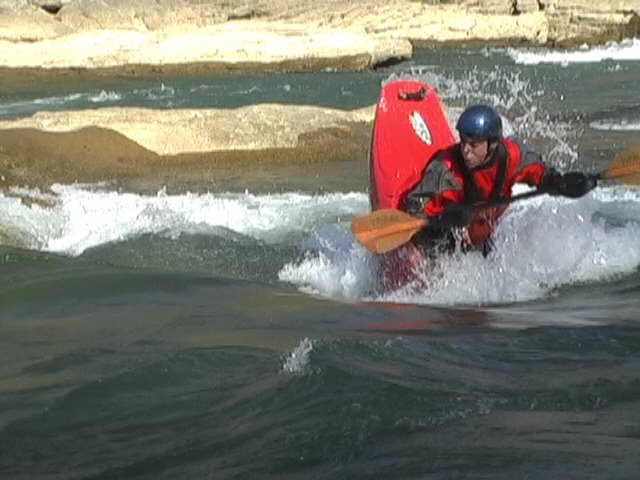 How To Clean Cartwheel Full Video (10.6mb)
How To Clean Cartwheel Full Video (10.6mb)This is a tutorial of how to do a bow and/or stern clean cartwheel.
Prerequisites: You need to have at least somewhat of a grasp on how to do a normal cartwheel. The clean cartwheel is a maneuver where the bow or stern goes through the water without help from the paddle. In order for it to “count” the end has to be at least 45 degrees in angle, and the paddle can not come into contact with the water at any time during the clean end.
Click
HERE to reference a .2 mb video of a stern and bow clean while reading.
How to Clean the Stern:Step 1: Get setup for a normal cartwheel in a hole. Preferably, this hole should be small and controlled to start to learn the clean cartwheel. You should put your bow at 12 o’clock, facing directly upstream. You should have little or no upstream momentum during this setup.
Step 2: Throw down the bow.
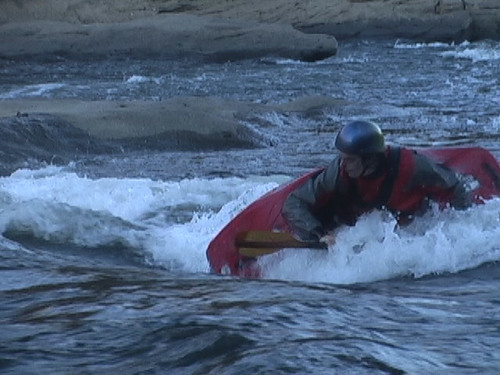 Step 3:
Step 3: Once the bow is under you and your boat is on its way to the stern end, be aggressive and rotate very early around to get into the position for a stern clean. This rotation should happen either just before your bow is directly under you or when the boat is dead vertical. Rotate to a position where the paddle would be in an exaggerated position for the stern end. In other words, your body, paddle, and head should be rotated and looking back, up at the seam of the hole. If all three of these (body, paddle, and head) are not rotated, then the clean will flop. Remember not to touch the water with your paddle at this step, however tempting it may be (unless you are off balance and know that the clean will not happen; this is usually due to a poor setup).
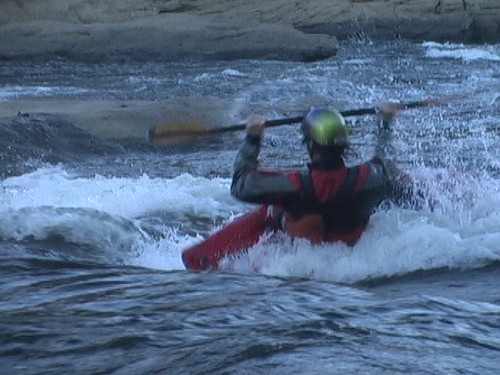 Step 4:
Step 4: Keep your weight balanced and over the kayak. At this point (you are not yet vertical on your stern), the water is going to have much of the control over your kayak. Make sure that your weight is balanced over your lower edge (the edge that is in the water). Additionally, your body should be in a neutral position or possibly leaning slightly back, depending on the hole.
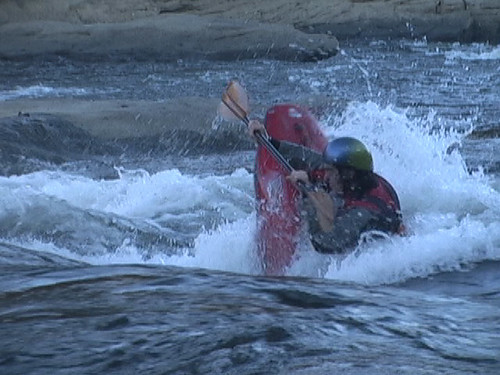 Step 5:
Step 5: Stay ahead of the kayak. Once your bow is in the air, and your kayak is vertical, your weight should be aggressively forward, and your body should be rotated and ready for the illusive third end. This step is much like any typical third end, where you must be ahead of the kayak and ready to throw down the bow.
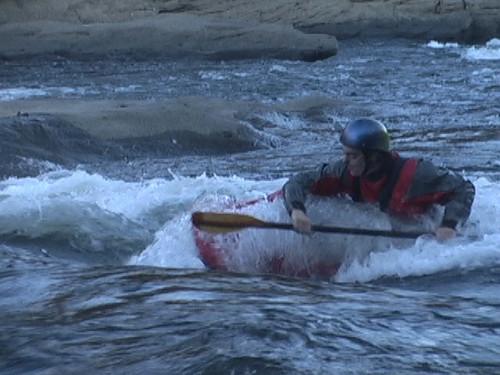 Step 6:
Step 6: Throw down the bow. Congratulations, you just completed a stern clean cartwheel.
How to Clean the Bow:The bow clean is much like the stern clean and involves the same prerequisite techniques to do the maneuver. Be sure to reference the stern clean tutorial for more information.
Step 1: Setup, Throw down the bow, then pull the stern though (or start backwards, then pull the stern though).
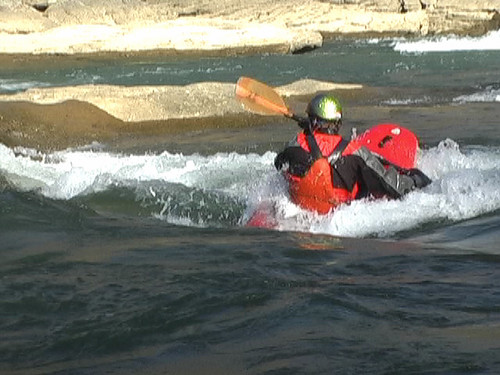 Step 2:
Step 2: Make sure to look at the seam of the hole and lean forward. Instead of placing the stroke in the water for the third end, lift the paddle high out of the water, somewhere around the height of your chin. At this point in the maneuver, your bow should be just hitting the water, your paddle should be in the air, and your edge should be engaged, just like it would be for a normal bow end.
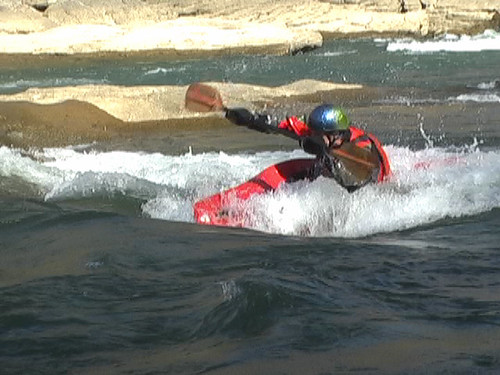 Step 3:
Step 3: Keep watching the seam of the hole with your eyes and stand up on your bulkhead. The act of standing on your foot-pegs helps put the bow down further into the water and engage the green water. This, in turn, will magically let the bow pass under you without a stroke.
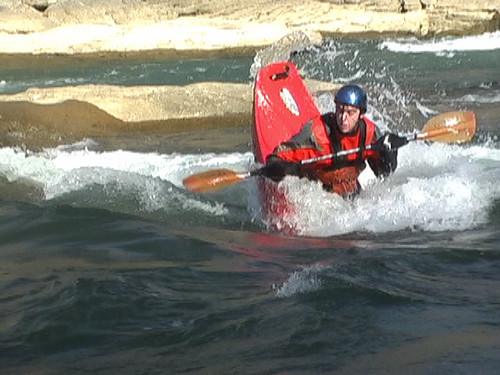 Step 4:
Step 4: Rotate your head, body, and paddle to get ready to pull the stern though. Congratulations, you just completed a bow clean cartwheel.
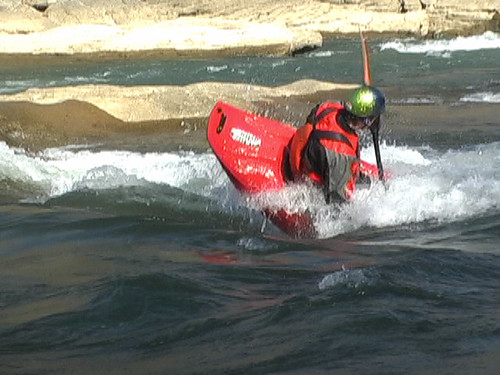
Personally, I favor the bow clean over the stern clean due to the fact that I believe it is much easier to lean forward and stay balanced than rotate and lean slightly back. This is personal preference to many paddlers, so try both and decide what you prefer.
Once you have both of them down, you can go for the ever-illusive SUPER clean (two cleans, bow and stern, linked together to do an entire clean cartwheel).
Troubleshooting:Problem: My stern/bow clean goes through, but, when I go for my next end, my boat is over vertical and I fall on my head.
Solution: When you are doing your stern/bow end, your boat is most likely vertical or close to vertical. This means that you will have to rotate and reach waaaay ahead and grab the water with your paddle for your next end. IF you grab the water early enough with your paddle, this will help flatten out that next end and keep you from falling on your head.
Problem: When I go for my stern/bow clean, my boat hits the water and stops and I usually fall on a brace or flip over.
Solution: This generally means that you need to rotate your body, head, and paddle more aggressively. Your head needs to be rotated and your eyes need to be actively seeing the seam of the hole when you start the clean. Another possible solution could be to do with balance. Make sure your weight is balanced over your kayak and your kayak is entering the water at around a 45 degree angle (more edge for a more vertical clean, less for a less vertical clean).
Problem: My clean end looks more like a clean spin.
Solution: This has to do with your setup. 1) You are either doing the first end too flat or too vertical. Find a balance between those two and the clean will obtain some elevation or, 2) you are rotating too aggressively (very unlikely). If this is the case, just go for another end and re-do the clean on the next wack around.
How To Clean Cartwheel Full Video (10.6mb)How to Clean Cartwheel Tutorial (Dial-Up Users Only)If you have both the bow and the stern clean down and want to
link the two together, just: start with a really good setup, do a balanced (and generally lower angle) first end. When your boat comes around for that next end, get ahead of your boat and throw down that end just like you would normally do. The trick to super-cleans is where the second and succeeding ends engage the water. If they engage in the right spot (11 or 12 o’clock), then, theoretically, you could go forever. Alas, this is what makes kayaking fun—whitewater is unpredictable.
I hope this helps people get a sense for how to clean cartwheel. Please check out the video for visual reference. If there are any questions, post them in the “Comments” page at the end of this text and your questions will be answered.
Good luck and see you on the water,
-Adam Johnson


















































